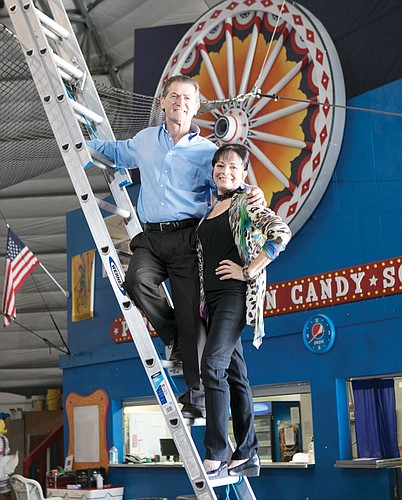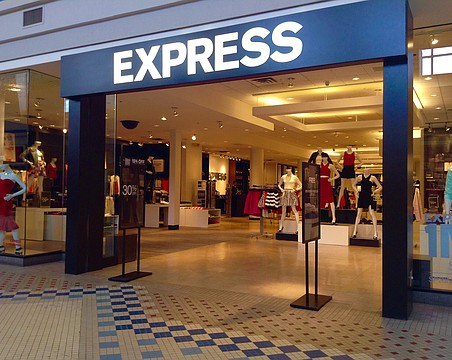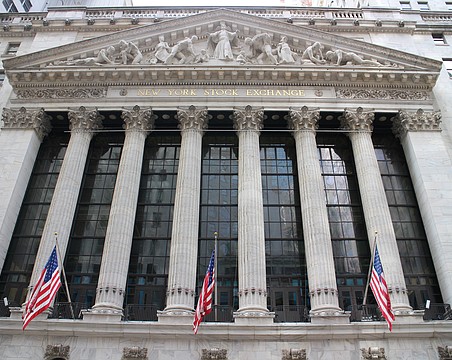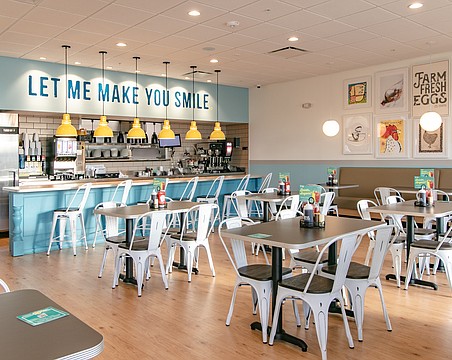A cardboard box full of instant happiness is stashed in the corner of an office at the Circus Arts Conservatory.
It's packed to the brim with red foam clown noses.
The Sarasota-based nonprofit recently placed an order for 2,000 noses to restock its supply. Employees pass them out at humor therapy events at assisted-living facilities and special events throughout the year.
These traditional red clown noses are perfect for an organization that celebrates the traditional circus arts, from soaring aerialists to daring tightrope routines.
That focus on tradition and the single performer or pair of performers in the ring sets the Circus Arts Conservatory apart from many other circus-infused shows. That especially includes Ringling Bros. and Barnum & Bailey Circus, which has modernized but seen declines in ticket sales — so much so that Feld Entertainment, the Ellenton-based company that owns the production, shut it down. Final performances of the 146-year-old Ringling circus were staged in May.
“The ending of Ringling Bros. is not detrimental to our circus or any other circus,” says Pedro Reis, founder and CEO of the Circus Arts Conservatory. “The show must go on. Change is inevitable.”
Reis is no stranger to Ringling Bros. and Barnum & Bailey. He toured with the circus, as did his wife, fellow aerialist Dolly Jacobs-Reis, the co-founder and associate director of The Circus Arts Conservatory. Her father, Lou Jacobs, performed with Ringling Bros. and Barnum & Bailey for 60 years as one of the most well-known clowns in the world.
Reis says the circus will be missed, but he says it lost something over the years, getting more electronic and high-tech.
That's not the case at Circus Arts. “Ringling Bros. is a three-ring circus designed as a spectacle in a large arena building,” says Circus Arts Conservatory Managing Director Jennifer Mitchell. “Circus Sarasota is an intimate tent environment. Every audience member is no more than 50 feet away from the performers. Sometimes you can even see the sweat dripping from their brow.”
The Circus Art Conservatory's main production, Circus Sarasota, uses a European-style big top tent that seats 1,645 people. And instead of trying to incorporate technology, Circus Sarasota has put the spotlight on performers.
“It becomes a theatrical experience like you're at the ballet or opera,” Reis says.
Reis says circus artists send them videos of their acts to consider. They also scour YouTube for impressive acts. “We continue to think about how to present something that's amazing and spectacular,” Mitchell says. “We spend a lot of time curating our shows and selecting our artists, often bringing people from around the world to Sarasota.”
The Circus Arts Conservatory's focus on highlighting artists has paid off. This past winter season, for example, Reis says 95% to 98% of seats were filled.
But it hasn't always been that way.
Under the Big Top
“We went to the school of hard knocks,” Reis says. “The first years weren't easy. We had the idea, 'If you build it they will come.'”
The first shows in November and December 1998 weren't sellouts. To drum up ticket sales, Reis put on a Santa hat and waved a sign at the top of the tent — a makeshift marketing strategy.
From 1998 to 2001, there was no marketing budget. “We were winging it,” Reis says. But unfilled seats made them realize the importance of having a communications strategy. Now they set aside money for marketing every year. “Marketing and public relations are key elements to filling a theater,” Reis says.
When money got tight in 2001, Reis says they even considered declaring bankruptcy. “We thought, 'Now is the time to close.'”
But a volunteer usher saw Reis' strained face and asked what was wrong. Reis told him the situation and the usher said he would loan the organization money.
That loan, along with booking impressive acts like the Flying Wallendas and collaborating with other arts organizations, helped turn things around.
An early collaboration with the Sarasota Ballet and an original ballet called “Ca' d'Zan,” was named for the Venetian Gothic mansion circus tycoon John Ringling built in the Roaring '20s overlooking Sarasota Bay. Ringling moved Ringling Bros. and Barnum & Bailey Circus' winter headquarters to Sarasota in 1927, which kicked off the area's decades-long connection with the circus. The performance generated a new audience for Circus Sarasota.
Today, the Circus Arts Conservatory has an ongoing collaboration with the Sarasota chorus Key Chorale. Every year it stages Cirque des Voix with dozens of singers, orchestra members and circus performers.
“Connecting different art forms together helps create satisfied audiences,” Reis says. “We often get standing ovations and people saying it's the best show they've ever seen.”
Come one, come all
Pedro and Dolly Jacobs-Reis founded the organization 20 years ago out of their garage. Now it has 23 full-time employees, 60 part-time employees during show runs and a $3 million budget, 82% of which comes from ticket sales. Over the past two to three years, Mitchell says, the organization has seen an increase in ticket sales of at least 10%.
The organization's projected revenue for the fiscal year ending June 30 is $2.8 million, according to the Circus Arts Conservatory's report on The Giving Partner, a local nonprofit resource with financial information. Reis says 70% of the Circus Arts audience is 55 years old and above, partially because of the community's demographics. Their productions have a 68% return audience.
This winter season, they added an extra week of Circus Sarasota shows. Nearly 40,000 people attended the show's four-week run.
The Circus Arts Conservatory also uses two key assets — the big top tent and youth Sailor Circus arena — to generate income. During the recession, corporate rentals of the tent started to fade, Reis says, but that line of business has begun to come back. The tent becomes a circus dinner theater and a unique night for corporate executives at companies such as Gordon Food Service, Fairway Independent Mortgage Corp. and Securian Financial Group.
Fun for all ages
Reis, whose first introduction to a nonprofit circus was when he worked for New York City-based Big Apple Circus, says his dream was to have a rigging shop and circus art school when he retired.
“I realized I could give back to the community through the circus arts,” he says. “And the best way to do that was as a nonprofit.”
The Circus Arts Conservatory was originally incorporated as a nonprofit in 1997. It was called The National Circus School of Performing Arts.
“In America, you had a sideshow, P.T. Barnum [and] preconceived notions,” Reis says. “It remains a battle. The biggest challenge is the word 'circus.' That's why we changed the name to The Circus Arts Conservatory.”
The organization has plans for a $5 million renovation of the Sailor Circus Arena, scheduled to begin in August. Reis says after the renovation the group's circus summer camp can grow from 600 to 1,000 students, introducing more young people to the circus world.
And more circus excitement is on the way: The Circus Arts Conservatory, in a first for any big top, will set up its tent on the National Mall in Washington, D.C., later this summer. Performers from Circus Sarasota, the Sailor Circus and Cirque des Voix intend to turn the Mall into a circus playground at the Smithsonian Folklife Festival.
“On the heels of Ringling Bros. closing, it's an opportunity for us to show that the circus is thriving,” says Mitchell. “We're growing and thriving and finding new ways to make the circus vibrant.”
Send in the clowns
In January, Feld Entertainment Inc., the parent company of Ringling Bros. and Barnum & Bailey, announced that final performances of the famous circus would be staged in May.
Officials at Ellenton-based Feld cite high costs and a decline in ticket sales as reasons for shutting down the show.
Feld Entertainment spokesman Stephen Payne says the closing will affect 600 people, mostly members of the circus' two touring units. He said when the company made the announcement in January, it shifted to two priorities — helping people impacted find new employment and finding homes for circus animals the company owns.
Payne says the company has found homes for some animals so far. It's yet to be determined which employees will move to other Feld Entertainment productions, but he's heard the crew talking about potential employment with Las Vegas shows or music tours. The performers, he says, are looking at other jobs here and abroad.
“It's sad to see it go, but there's still a place for the circus in family entertainment,” Payne says. “I'm confident that people who want to stay in the circus will be able to find other opportunities to showcase their talents.”
Pedro Reis, the founder and CEO of The Circus Arts Conservatory, a Sarasota-based nonprofit, has received calls from Ringling Bros. and Barnum & Bailey performers. “If it fits, I'll offer them work,” he says.
Feld Entertainment is not putting the circus up for sale. Instead, officials say it will retain the intellectual property of Ringling Bros. and Barnum & Bailey.
Could Feld Entertainment stage a circus resurrection down the road? “You never know what the future will hold,” Payne says.






